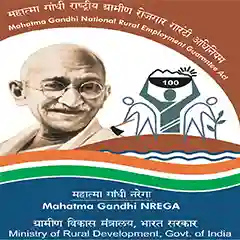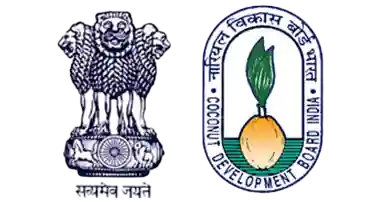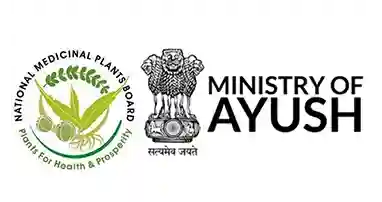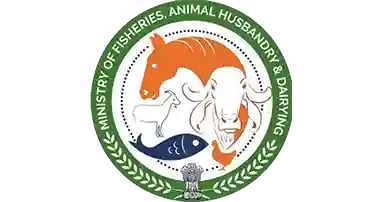Convergence & International cooperation
Anganwadi Centre (AWC)
The Government is committed to repositioning the Anganwadi Centre (AWC) as a “vibrant Early Childhood Development (ECD) centre" to become the first village outpost for health, nutrition and early learning. Towards this end, several steps have been taken for improvement and strengthening of the Integrated Child Development Services (ICDS) scheme covering programmatic, management and institutional areas.
- Anganwadi Centres are being constructed under Mahatma Gandhi NREGS in convergence with the ICDS scheme of the Ministry of Women and Child Development(MWCD). The mode of convergence is both technical and financial.
- The present ceiling for Mahatma Gandhi NREGA is a maximum of 8 lakhs and the additional amount will be borne by MWCD and/or any other scheme.
Horticulture Department (Ministry of Agriculture & Farmer’s Welfare-MoA&FW)
Many horticultural activities are permitted under Mahatma Gandhi NREGA, and these are taken up as per the approved Annual Action Plan under the Act.
- The horticultural activities enable the beneficiaries to improve nutrition and at the same time increase their incomes and livelihoods.
- Horticulture Division, through the National Horticulture Mission (NHM) and various centrally sponsored schemes relating to the development of horticulture under the Mission for Integrated Development of Horticulture (MIDH), will arrange training and orientation of horticulture activities for officials, CRPs under NRLM in the institutions of excellence.
- DoAC&FW may include in its Annual Action Plan (AAP) convergence with MoRD indicating activities and quantum and sources of funding for convergence, assisting the State RD Departments in the formulation of their own same AAP for horticulture-related activities among other things. Under the existing provisions of MIDH, the convergence can be considered under the following components:
- Area expansion of fruits/spices/plantation crops
- Rejuvenation work
- Creation of water resources
- Setting up of nurseries
- Training in Horticulture related activities
Rubber Board (Ministry of Commerce & Industry)
Rubber Plantation is a means of sustainable livelihood that not only provides employment but also leads to recurring income over the long term.
- Rubber Board is implementing two schemes viz. Rubber Plantation Development Scheme (RPD) and Rubber Development in North East (RDNE).
- These provide handholding support to cultivators during the initial years of rubber plantation development and build capacities in rubber cultivators to reap the harvest of the fruits of their hard labour when the plantation is ready for harvest.
- Further, the scheme facilitates value addition and also provides a strong marketing network so that the remote rural areas are assured of appropriate market linkages.
Given the above potential synergy between the two schemes/programmes, guidelines for taking up Rubber Plantation through the convergence of Mahatma Gandhi NREGS and schemes of the Rubber Board under the Ministry of Commerce and Industry have been dovetailed.
Coconut Development Board
Coconut farming and industry play a pivotal role in the agrarian economy of India by providing food and livelihood security to a major segment of the rural population in the country. Apart from the extensive uses of all parts of the palm, coconut is seen to hold the key to unlocking the potential for reducing poverty in rural farming communities.
- CDB provides support to cultivators during the initial years of coconut plantation development. When established, coconut palms become a sustainable asset to poor farmers as a source of regular income.
- Almost all the work involved in the initial years of coconut gardens is labour-intensive. It is estimated that around 1050 person days are required for raising one hectare of coconut garden in the initial 6-7 years (during the juvenile phase).
Ministry of AYUSH (Medicinal Plantation)
Medicinal plants are not only a major resource/base for the traditional medicine and herbal industry but also provide livelihood and health security to a large segment of the Indian population.
- Ministry of AYUSH through its various research organizations specially, through the National Medicinal Plants Board (NMPB), initiated both conservation as well as cultivation of medicinal plants. It is noticed that there is a good scope for convergence between the plantation of medicinal tree species in AYUSH under NMPB and tree plantation activities under Mahatma Gandhi NREGA
- Plant species should be selected as per agro-climatic conditions, market opportunities, forward linkages, income generation etc.
Economically beneficial perennial plant species including high-yielding clones./ varieties (should be listed with due consultation of experts from the Horticulture department/ Forest department/ ICAR/ ICFRE/ Agriculture Universities/ KVKs/ Ayush Department etc. before the start of the planning process
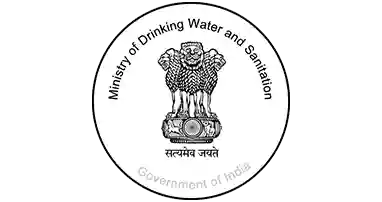
Construction of Liquid waste Chamber
Department of Drinking Water & Sanitation (Ministry of Jal Shakti)
Construction of Community Sanitary Complexes (CSCs) in villages is one of the key components of the programme for maintaining ODF sustainability by providing sanitation facilities for those whose houses IHHLs are not possible on account of space constraints or water availability or sewer feasibility. It could also cater to the floating/migrant population.
- Construction CSCs is an important community-level activity under SBM (G)- Phase-ll for achieving the objective of ODF pus status in rural areas.
- It has been decided that unskilled labour components up to 230 person days for construction of the CSCs will be covered under Mahatma Gandhi NREGA.
- The technical guidelines for the construction of CSCs under SBM (G)-Phase-ll will be followed.
- All the guidelines of Mahatma Gandhi NREGA should be adhered to during the construction of CSCs
Department of Animal Husbandry and Dairying (DAHD) -Fodder Cultivation
Animal Husbandry and Dairying (AHD) constitutes a major employment activity in rural areas and 9.2 Crore farmers are dependent on it. Optimal development of AHD activities within the village would result in reduced dependence of rural landless and small and marginal farmers on wage labour for sustenance and will also provide several livelihood opportunities for self-employment.
- Identification of Panchayats for the development of fodder farms for individuals and community use in Aspirational and other districts.
- For Fodder development, DAHD will map fodder-scarce districts and blocks and provide the list to MORD/States.
- In all aspirational districts which are fodder scarce, 100 Panchayats will be earmarked every year for the next three years, for taking up fodder development.
In other districts, the state-specific strategy will be formulated in consultation with RD officials.

Silk Board (Ministry of Textile)
Sericulture as a source of livelihood and an important tool for rural employment: Sericulture and Silk industry in India contribute significantly towards rural employment, poverty alleviation, women empowerment, and equity redistribution, resulting in improving the national economy. The sericulture sector employs about 7.5 Million rural people, mostly from the vulnerable sections of society.
- Central Silk Board (CSB), a statutory body under the Ministry of Textiles, is a Science and Technology (S&T) based Research and Development organization and its main thrust has been on Research-based activities.
- Almost all the work involved in sericulture including silkworm host plantation is labour intensive. It is estimated that around 11 man-years of employment is generated by 1 Ha of silkworm host plantation along the entire silk production chain covering all the activities till the final product.
- Convergence between Mahatma Gandhi NREGA and the Catalytic Development Programme (CDP) of the Ministry of Textiles is mutually beneficial, as it has the advantage of guaranteed resource support which ensures transparency and accountability.
Untied funds and the provision of decentralized planning enable comprehensive need-based planning at the grassroots with a pivotal role in the Panchayati Raj Institutions (PRIs).
Border Road Organisation (BRO)
BRO constructs the road in the border areas mostly keeping the defence and strategic considerations of the nation. Most border areas are rural and the infrastructure including rural roads are also taken up under Mahatma Gandhi NREGS in these areas. To optimise the national outcomes, an effective synergy and convergence between the two schemes without diluting their own goals and objectives.
- For rural connectivity convergence work under the scheme, BRO will be the Programme Implementing Agency(PIA)
- The unskilled labour component will be made from Mahatma Gandhi NREGA. The top-up to the workers may be paid separately by BRO.
- The cost of materials up to 2/3 of the total wage cost per work could be borne under Mahatma Gandhi NREGS.
Maintenance work of tunnels & Bridges of BRO is permissible under the scheme. However, the construction of tunnels & Bridges of BRO is not permissible under the Mahatma Gandhi NREGA.
Moringa Plantation (DAY-NRLM)
Moringa plantation is a permissible activity under Mahatma Gandhi NREGS. DAY-NRLM is promoting moringa plantations through various initiatives. Moringa plantation as an essential component of agri-nutri garden initiative of farm livelihoods interventions.
- Promotion of Moringa/drumsticks under the individual lands of SHG members.
- Train livelihoods staff, CLFs, PGs, Krishi Sakhi and SHG members for training on the promotion of Moringa / Drumsticks and taking up plantation works.
- Execution of nursery and plantation through CLF as PIA under Mahatma Gandhi NREGS.
The monitoring of progress should be done at the State/UT level under the Chairpersonship of the state Secretary (in charge of SRLM and Mahatma Gandhi NREGA) along with the State Mission Director, SRLM and Commissioner, Mahatma Gandhi NREGS.
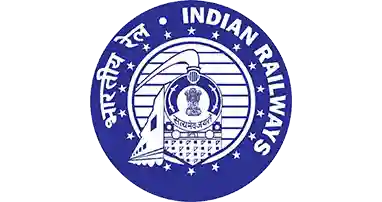
Ministry of Railways
An inter-ministerial convergence had been made with the Ministry of Railway and Mahatma Gandhi NREGA for the execution of the works in convergence.
- Construction and maintenance of approach road for level crossing
- Construction and maintenance of approach road for railway station
- developing and clearing silted waterways, trenches and drains along track
- Repair & widening of existing railway embankment/cuttings with clearing of vegetative growth
- Plantation of trees on the extreme boundary of railways
Protection work of existing railway embankment/cutting/bridges.


 Government of India
Government of India
